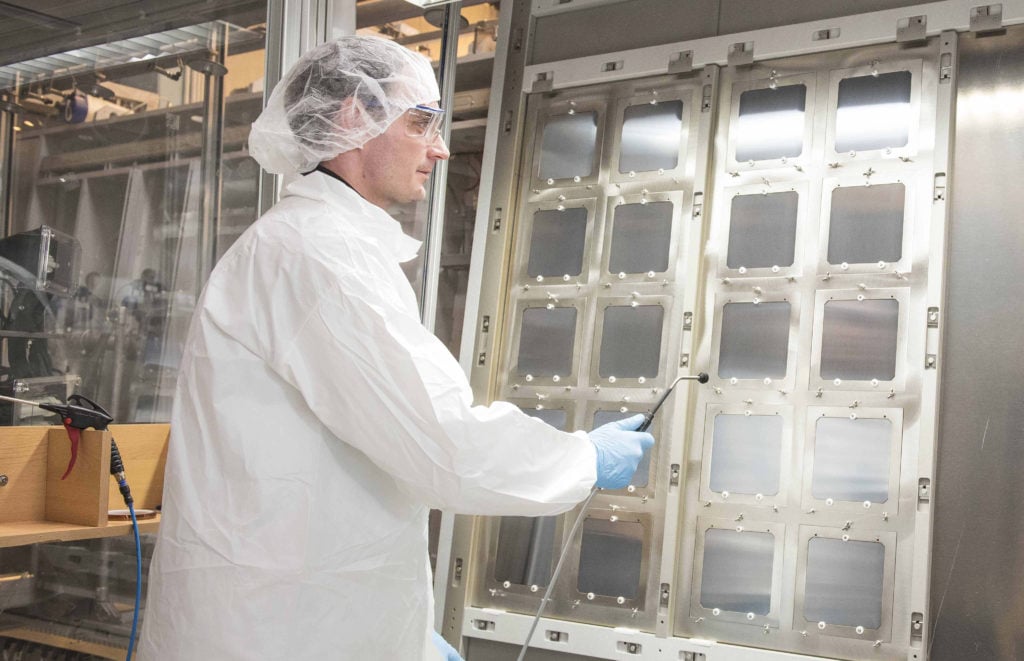
Bifacial perovskite cells could potentially produce up to 20% more energy yield than their monofacial counterparts, according to experimental research by scientists at the US’ National Renewable Energy Laboratory (NREL).
The researchers said that they constructed a small, lab-size test cell with bifacial capability, where the front-facing side captures direct sunlight and the backside absorbs reflected light from beneath the panel.
Unlock unlimited access for 12 whole months of distinctive global analysis
Photovoltaics International is now included.
- Regular insight and analysis of the industry’s biggest developments
- In-depth interviews with the industry’s leading figures
- Unlimited digital access to the PV Tech Power journal catalogue
- Unlimited digital access to the Photovoltaics International journal catalogue
- Access to more than 1,000 technical papers
- Discounts on Solar Media’s portfolio of events, in-person and virtual
Or continue reading this article for free
The aim for a bifacial perovskite cell would see the front face achieve parity with the monofacial efficiencies that have been posted on commercial-size cells – like Oxford PV’s 28.6% – and the back face get very close to these levels, NREL said. In the test cell, the front face had a conversion efficiency of 23% and the reverse side kept up with between 91-93% of that.
Kai Zhu, a senior scientist in the Chemistry and Nanoscience Center at NREL said: “This perovskite cell can operate very effectively from either side.”
He added that the team had used optical and electrical simulations of a bifacial cell to determine the optimum thickness for the perovskite layers. Too thick would result in photons being blocked, but too thin a layer would fail to absorb enough of the solar spectrum. The resulting layer was 850 nanometres thick which, for context, NREL compared with the 70,000 nanometre thickness of a human hair.
The researchers said that, though more expensive to produce than monofacial cells, in the long-run bifacial perovskites could prove more economical by producing 10-20% more power.
Right now monofacial perovskite cells are yet to be produced at any scale, let alone bifacial ones. PV Tech Premium published a feature on the potential for perovskite commercialisation in the US earlier this month, speaking with solar wafer specialist CubicPV about its US$100 million funding for a perovskite production pilot.
NREL’s research, funded by the US Department of Energy Solar Energy Technologies Office, is currently hypothetical. In the above article, CubicPV told PV Tech Premium that Perovskite’s entry into the solar PV market will likely begin with rooftop and small-scale deployments where high efficiency is key over installation cost, and this will require innovation in monofacial technology first. Currently, that is the major concern of those looking to bring the technology to market.
